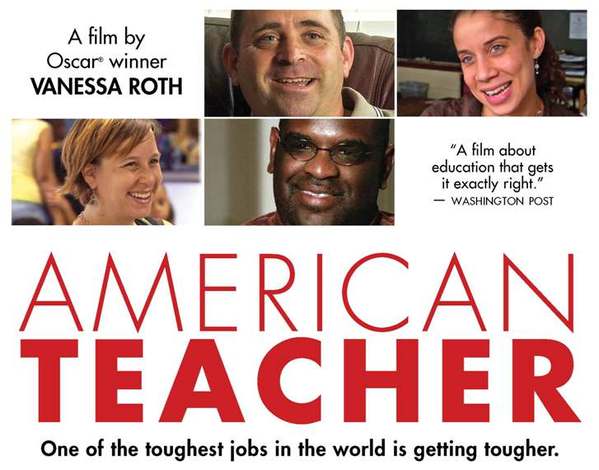Finding Math in Nature’s Patterns

Succulent spiral
As I recently wrote in Don’t Teach Them Facts – Let Student Discover Patterns
It’s unfortunate that student don’t get to use their innate perceptual skills more often in the classroom. Instead of discovering patterns on their own, students are “taught” to memorize patterns developed by someone else. Rather than do the messy work of having to figure out what’s going on, students are saddled with graphic organizers which take all the thinking out of the exercise.
“Doodling in Math Class: Spirals, Fibonacci, and Being a Plant” captures the fascination of patterns in nature. Discover more patterns from Vi Hart – Mathemusician
Image credit: flickr/Duff Axsom
Texting While Walking: Video Guide for Safety and Etiquette
Here’s a clever video by Casey Neistat. Using an novel combination of live action and animation, he tell the story of the dangers of texting while walking. Casey notes,
By mastering the etiquette of texting, I hope we can gain more control over our increasingly electronic lives. Let’s stop acting like hollowed-out zombies, with BlackBerrys and iPhones replacing eye contact, handshakes and face-to-face conversations. It’s time to live once again in the present and simply be where we are. More
As someone who lives in downtown Portland Ore (without a car), I’m always trying to improve my pedestrian etiquette. It might be nice if the drivers stopped texting, as well.
This video is part of the New York Times Op-Docs series – short, opinionated documentaries.

Texting While Walking
Testing or Teachable Moments?

Extinguished
If you read my blog you’ll know that while I support accountability, I’m outraged by the fact that a generation of teachers and students have become slaves to corporatized testing. While our school district mission statements all claim to “foster life-long learners,” in reality, teachers are forced to spend increasing class time prepping kids for predictable tests. … Maybe after they graduate, students will learn how to function in an unpredictable world that devalues routine work and rewards adaptable learners with marketable “soft skills.”
And so today’s Oregonian guest column by Portland teacher, Allen Koshewa, struck a chord with me. He writes:
Several years ago, after I brought in tulips from my garden, my fifth-grade students wanted to plant their own. I learned that few students in my school’s high-poverty community had ever planted anything, so we planted tulips (not in the curriculum). In the process, one student found part of a rusted horseshoe, so we studied the history of the neighborhood (not in the curriculum), discovering that a farm had existed there 90 years earlier. Then, because of the proliferation of questions about the artifacts we’d unearthed, we studied archaeology (not in the curriculum). With the new push for common core standards nationwide, perhaps no student in any fifth grade in the United States will plant tulips, explore the history of his or her neighborhood or learn about archaeology ever again.
I urge you to read his entire essay. As you do, reflect on how the test regime has extinguished the teachable moment. Tulips… to planting… to discovery of horseshoe create the incentive to study local history and techniques of archaeology. Students using one discovery, to pose, and then answer their own questions. Teachable moments that inspire students with purpose, mastery and accomplishment.
Image credit: Flickr/FrasSmith
Black Friday: Will Teachers Be Shopping or Working at the Mall?

American Teacher Poster
Throughout my teaching career I had a second job. For the first decade, I spent my summers painting houses. My non-teaching friends joked that I had “summers off.” No, I just had a different job. As the superintendent gave the the opening day pep talk at the start of the school year, I was thinking about the dormers that I still needed to finish.
Ten years into my career, I couldn’t afford to own a home in the community I taught in. I frequently ran into former students. “Hey Mr. Pappas … great to see you … remember me? … are you still a teacher?” I would think – would you ask a doctor that question? … or don’t you consider teaching a real job?
What’s your kid’s teacher doing tonight – home working on lesson plans, or selling cell phones at the mall?
Eventually, I realized I could align my second job with my teaching career – so I turned to academic writing and adjunct teaching. By supplementing my income with summer and evening work, I figured out a way to stay in the classroom for 25 years.
So much for the personal backstory. This post is about American Teacher, a film that follows four teachers who struggle to make ends meet while trying to stay in the profession they love. With narration by Matt Damon, it tells their stories through a mixture of footage and interviews with students, families, and colleagues, as well as the teachers themselves. By following these teachers as they reach different milestones in their careers, it uncovers a deeper story of the teaching profession in America today.
“American Teacher” is waiting for a major theatrical release. I plan on attending the Portland Ore premiere of the film on Thursday Dec 8 at the Hollywood Theater. The film’s producer Ninive Calegari will be hosting the screening.
(I wonder if she’ll bring Matt??) For more information on national screenings of “American Teacher” or to arrange a screening in your area click here.
Statistics show that nearly half of all teachers leave within the first five years. Low salaries and high stress are among the top reasons teachers “burnout” and quit the profession. Sixty-two percent of our nation’s teachers have second jobs outside of the classroom. What’s your kid’s teacher doing tonight – home working on lesson plans, or selling cell phones at the mall?
In countries known for superior student performance (Singapore, South Korea and Finland) top college students are drawn into teaching by competitive salaries and high respect for their contribution to society. In contrast, US teachers are underpaid, relative to other skilled professionals, and they have to listen to politicians accuse them of being lazy and undeserving of collective bargaining rights.
Nearly half of the American teaching profession is eligible for retirement in the next ten years. Will that be seen as a opportunity to hire low-paid replacements? Or do our kids deserve something better?
PS. Need some inspiration? Read my recent post Why I Teach? A Voice from StoryCorps






